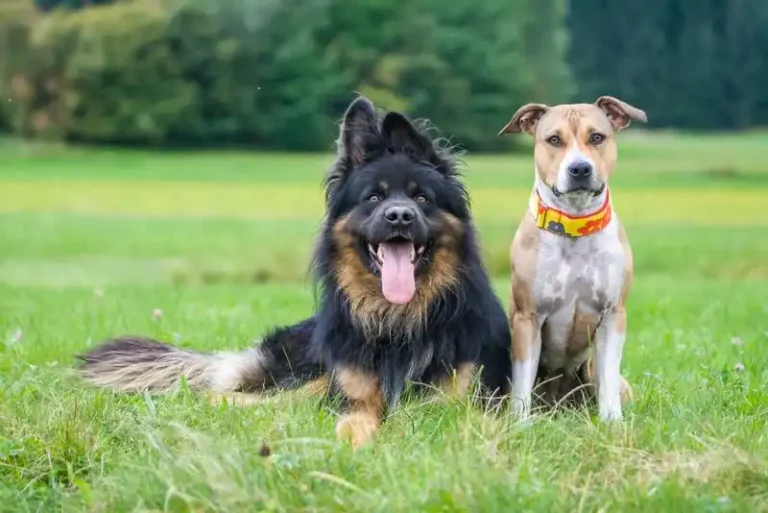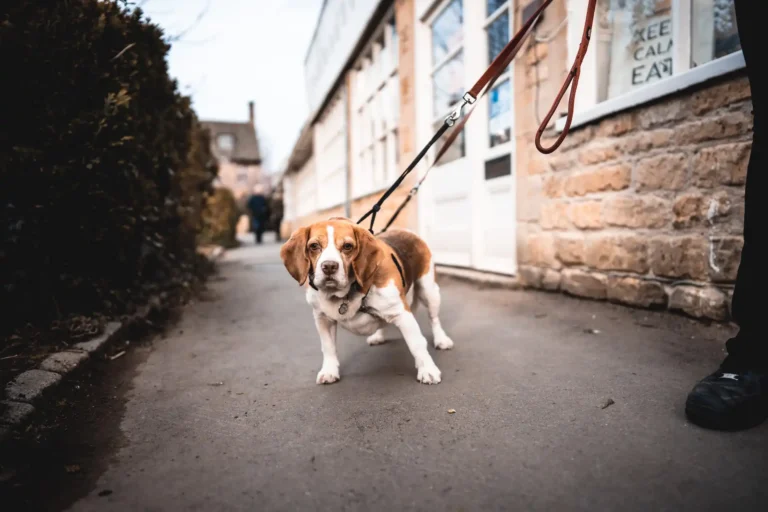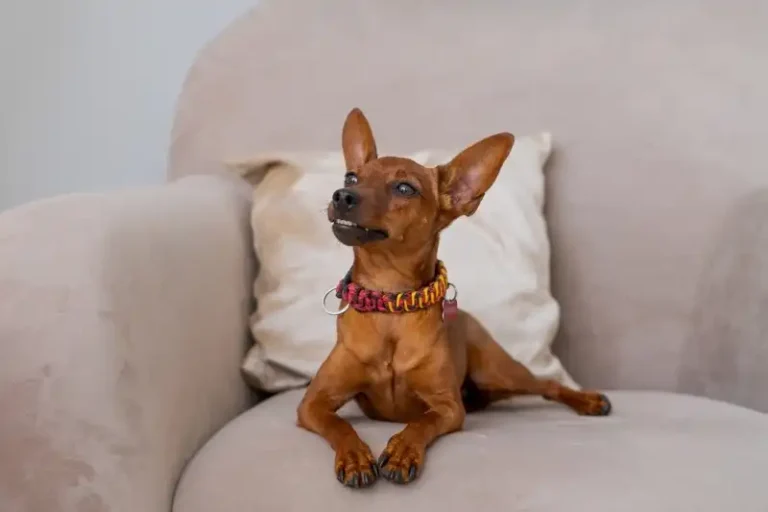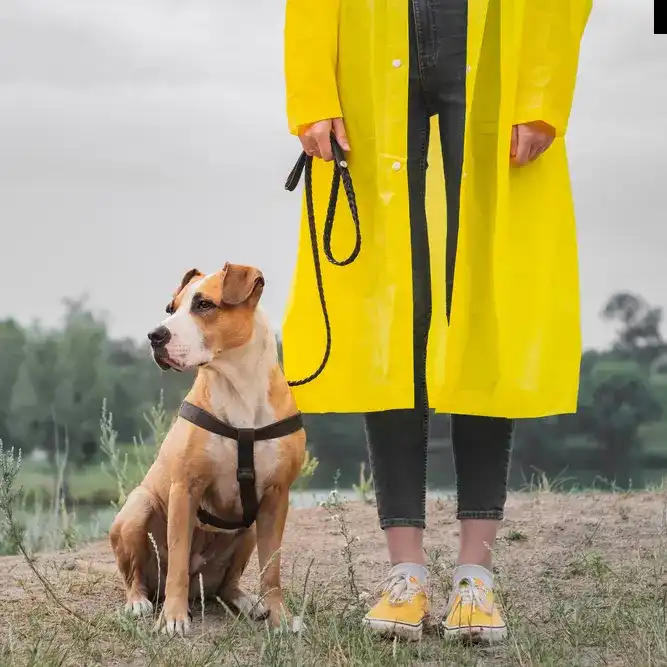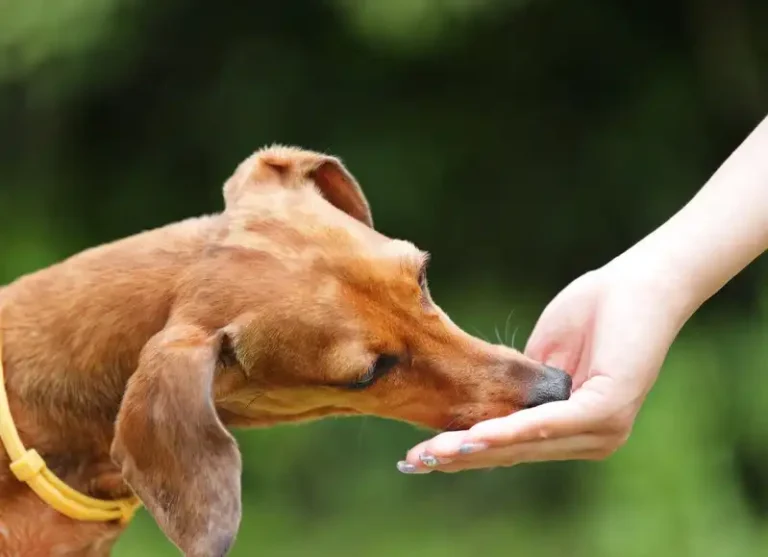10 popular dog tricks
Lift your paws, give a paw or catch a treat in the air? With these 10 tricks, you and your dog will be the center of attention at the party. And the best part: dog tricks not only ensure enthusiasm from the audience, but also challenge your dog both physically and mentally. At the same time, training also strengthens the bond between dog and human.
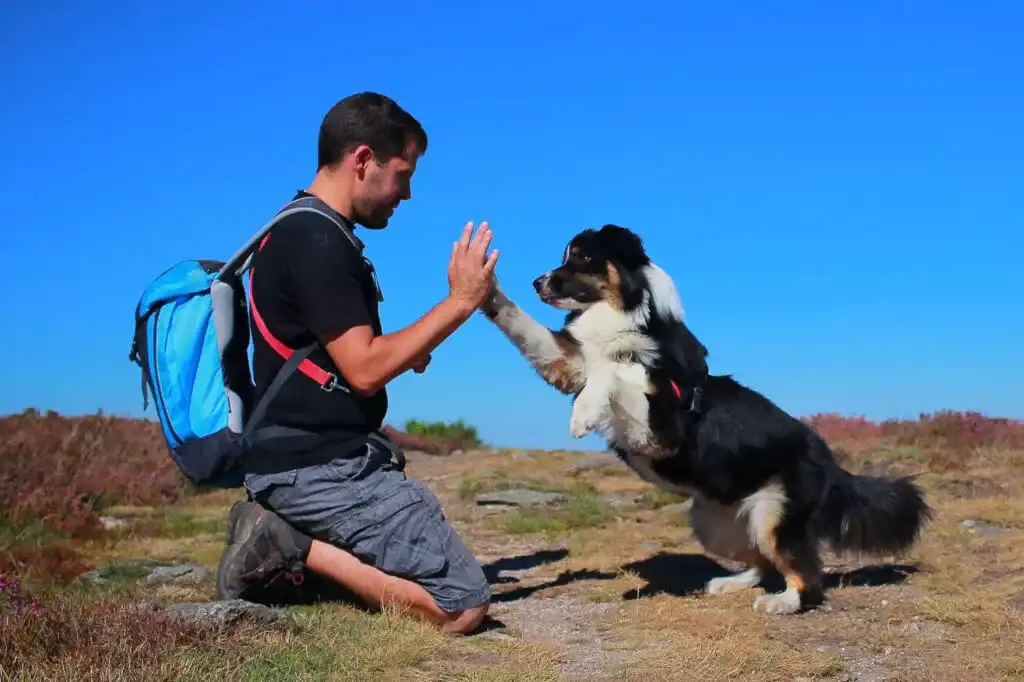
When a dog walks in a circle on command or waves its paws goodbye, it’s sure to bring smiles on faces and enthusiastic applause. But more important than the admiration of the audience is how your dog feels about it. Fortunately, most dogs are naturally curious. They want to be kept busy and love to exercise physically. When there’s also a reward waiting, such as a treat or grateful love from their owner, the dog’s world is in perfect order.
The most important thing is that you have fun!
Knowing that training dog tricks also has many benefits for the dog-human relationship, many dog owners set ambitious goals. But before you start training, you should be aware that not all tricks are suitable for all dogs.
Most dogs are willing to learn – especially if it also gives them an advantage in the form of a reward – but their size, build or weight may prevent them from practicing certain dog tricks. In addition, dogs, just like us humans, have individual preferences.
For example, if your dog does not like to lie on its back, you should not practice tricks where it has to roll around, and if it does not like to jump, you should avoid practicing tricks where the dog has to catch treats that you throw in the air.
A basic requirement for practicing dog tricks is that both you and your dog enjoy it. In addition, the good feeling of goal achievement will come much faster if the focus is joy, than if you work steadily on an exercise while your dog would rather lie down and relax in his basket.
The road is created as you walk.
Practicing dog tricks should be a positive experience for your dog. Force or harshness is completely misplaced. Go slowly and practice the tricks step by step. Be patient with your dog and respect his learning pace. Of course, this does not mean that you have to give up as soon as your dog does not immediately learn a trick.
Sometimes it takes a while for a dog to understand what his owner wants from him. It is important that you observe your dog carefully and learn to assess his behavior. If your dog loses motivation, you should stop training and continue another time. Over time, you will also get a good feeling for whether your dog is still in the game or whether he would rather move on to other things.
Practicing dog tricks thus promotes a better understanding of your dog. At the same time, your dog gains trust in you because you comply with his needs. The most important thing about dog tricks is not the perfect execution, but good communication and unity during training. The consistent and gradual training, as well as the small successes in between, promotes self-confidence and strengthens the bond between you and your dog.
How to motivate your dog
Mutual trust, reliability and clear commands are the cornerstones of successful dog training – this also applies to teaching small tricks. But to really get your dog excited about our rules and tricks, that little bit extra is needed.
Although some dog breeds have an inherent “will to please” (i.e. the desire to please their owner), they are basically a bit selfish at the same time. After all, they know that the desired behavior brings them many benefits, while they know that unwanted behavior will be ignored or even punished. In some breeds, which are said to have a certain stubbornness, you can actually observe how they consider whether carrying out a command will benefit them at all.
Success through rewards
Your dog’s craving for praise can be used when training. Dogs choose the path that promises them the most success. If they expect a treatAt the end of a successful exercise, he will naturally be more motivated to participate.
Positive reinforcement, in the form of treats, cuddles and pats or a long-awaited dog toy, will bring you and your dog to the goal faster and more reliably than if you force the dog to do something, or even punish him if he does not do an exercise that he does not want to do. In order for the dog to learn which behavior is the right one, you should reward him directly after he performs a desired behavior.
Dogs live in the present, and always put the reaction of the master in direct relation to the current situation. It is also important that you always end a training session with a feeling of achievement. If you find that an exercise is too much for your four-legged friend, you should take a few steps back. Give him a command that he can reliably perform and reward him for it. Then you can stop the training. Then he will happily join in the training again next time.
Before you start training…
The basis for performing the following 10 dog tricks is that your dog has mastered the basic commands such as “sit”, “stay”, “cover” or “let go”. Only start with the tricks when your dog has mastered these commands reliably. Also, make sure that the time to start training together is right.
If your dog is tired or hungry, he will probably show little interest in your tricks. Even after eating, you should give your dog at least an hour to digest his food. When he is rested and full, he will definitely participate enthusiastically in the training.
Top 10 Dog Tricks
- Give paw
A classic dog trick, which also forms the basis for many other tricks, is the “give paw.” While this trick is relatively easy to learn, it still requires a bit of patience (and some treats) to get your dog to respond to the command reliably and with both paws. - Here’s how: give your dog the command “sit” and kneel next to him. Lift one paw with your flat hand and clearly say the command “give paw”. Repeat this process until the dog lifts his paw on his own when you give the command.
- Then immediately reward him with a treat. Alternatively, you can hide a treat in your hand from the start and hold it close to the dog’s head.
The dog will try to get the treat and will probably also use his paw at some point. If he puts his paw in the hand that you are holding the treat in on his own, give him the treat while saying “give paw”. Over time, your dog will remember this exercise and lift both his left and right paws as soon as you hold your hand flat in front of him.
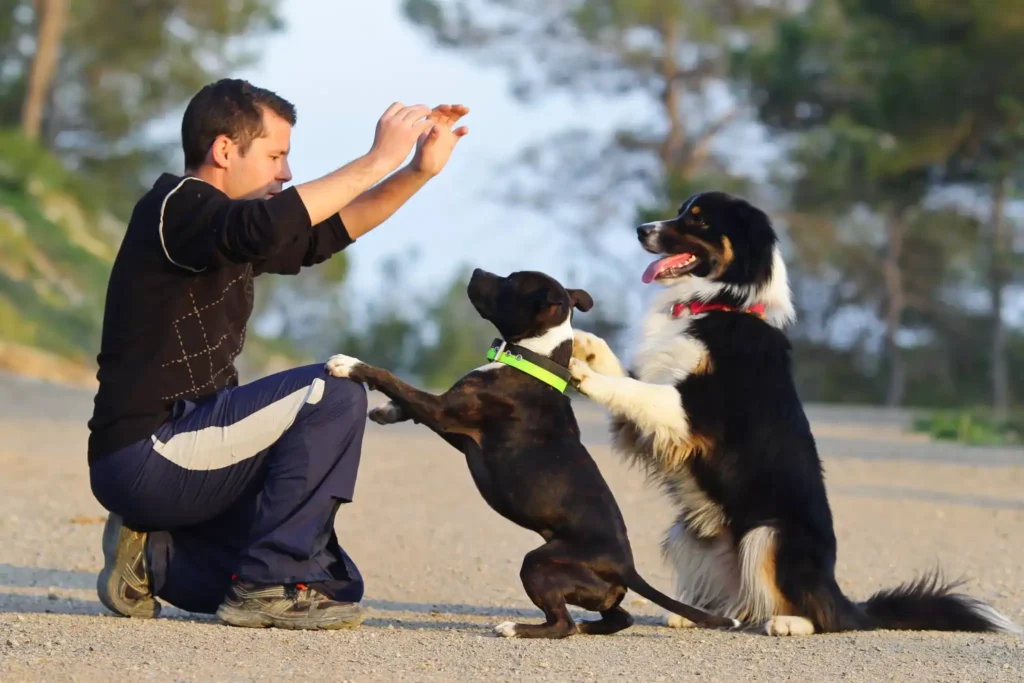
High five or waving
Clapping hands, also known as the “high five” or “give me five”, is well-known among us humans, and is no longer only used in sports as an expression of mutual success. It’s no wonder that this is also becoming an increasingly popular dog trick. If your dog is already a master of giving a paw, you will be able to teach him this gesture relatively quickly.
Here’s how: hold your hand straight with your palm facing your dog (not horizontally as with the “give paw” command) and say the already familiar command “give paw”. As soon as your dog lifts his paw and touches your flat hand, give him a treat.
Your dog will probably be a little confused at first, wondering why you’re rewarding him even though he hasn’t put his paw on your hand yet. But over time, he’ll get used to the new training. Once he’s developed a routine, you can also introduce a new command like “give me five” or “high five”.
Later you can try the same thing from a distance. As you train, move further and further away from your dog, so that at some point he will not be able to touch your hand when he raises his paw. However, reward him as soon as he raises his paw – this way he will learn that just raising his paw is enough. When you finally stand further away and raise your hand vertically to greet, the dog will “wave” back with his paw.
Sitting teddy bear/ both paws in the air
A very popular exercise is to get your dog to raise both front paws, also known as sitting teddy bear. To do this, he must shift his weight backwards. Depending on your dog’s skill, it may take a while for him to find his balance in this position and be able to lift both paws up. It is important that your dog always sits on his back during training – if he stands up with all his legs, he is doing the trick wrong.
How to do it: As with the previous two exercises, start by giving the command “sit”. Lead your dog close to a wall and give him the command “sit”. Ideally, he will be sitting with his back against the wall at the beginning of the exercise – this will help him find his balance at the beginning, and prevent him from getting up too quickly.
Now show him a treat and pass it over his head with your hand. Note: do not raise the treat too high, otherwise the dog will try to stand up. As soon as your dog straightens up a little and lifts his paws slightly to get the treat, say the command. Reward him by giving him the treat. If he stands up, give the command “sit” again and keep the treat until he has mastered the exercise.
Stepping
This exercise comes from Dog Dancing. You as the owner stand facing the dog and lift your left and right legs alternately. In sync, the dog lifts its right and left paws up while sitting. This makes it look like the dog and human are marching together in place.
How to do it: the prerequisite for this exercise is that the dog has mastered the command “give paw”. Have the dog sit while you are facing him. Now, as you say “paw”, lift your right leg instead of your hand. Many dogs that have already learned to give paw will instinctively lift their paws at the same time as they orient themselves towards your leg. If the leg confuses your dog and he does not follow the command, you can support him by first placing your outstretched hand on your leg.
Praise him as soon as he lifts his paw at the same time as the leg, and give him a small treat. Repeat the exercise, but this time with the other (left) leg. Your dog must now lift the other paw. Repeat the exercise several times and require more and more steps before you give him a reward. This means that the treat will only wait after he has lifted his paw at the same time as the leg two, four and six times.
Knock over objects & close doors
The goal of this exercise is to initially allow your dog to touch and knock over an object with his paw. If he masters this, you can even teach him to close doors with his paw.
Here’s how: put an interesting object (such as a plastic bottle or a cuddly toy) in the room and call your dog. Wait and see what happens. If the dog approaches the object and touches it with his paw, praise him generously and give him a treat. Repeat the exercise by repeatedly pointing to the object and praising the dog as soon as he touches it with his paw again.
The next day, you can expand the exercise with an appropriate command. When the dog now touches the object, give the command again. After a few days, this signal will stick so that your dog will respond even when you point to other things in the house and give the command.
To teach him to close doors, point to the door and give the already familiar command. If your dog touches the door with his paw, reward him. To ensure that he really closes the door, expand the command to include “close the door,” and reward your dog only when he has touched the door hard enough for it to close.
Gradually, you can also increase the distance to the door – until it is enough to point to the door from the sofa or from the table, while giving the command to close the door.
Roll around
In this trick, your dog will roll over onto his back until he is back in the starting position of “tire”. Since some dogs are not used to lying on their backs, this exercise requires both skill and a little patience. Of course, it also helps if the reward consists of small treats that your dog likes extra well, but doesn’t get that often.
Here’s how: give the dog the command “cover” so that it lies down. The dog should now lie in front of you with both elbows on the ground. Hold the treat you have chosen for this exercise right in front of your dog’s nose, so that its nose just touches the treat, but without it being able to eat it.
Now move your hand slowly in the direction you want your dog to roll by guiding the treat over the back of its head. Your dog will try to follow the treat with its nose and, at best, turn around automatically. If your dog hesitates to lie down on its back, you can support him a little with your other hand and gently take him to the desired side position.
Crawl or crawl
Another dog trick is to bend down and crawl along the ground. However, it may take a few training sessions before your dog can master this trick. Crawling, as is known, does not correspond to the dog’s natural movements.
Here’s how: give your dog the command “cover” and kneel next to him. Place one hand lightly on his back and hold a treat in front of his nose with the other hand, while slowly moving it away from him. If your dog wants to get up to follow the treat, gently ask him to return to the floor. Say the command “crawl” or another similar cue.
As soon as he manages to crawl forward a little – even if it’s just a short distance at first – praise him and give him a treat. Repeat this exercise until your dog crawls forward on your command. If he masters this movement after a few days, you can remove your hand from the dog’s back and sit a little further away. Hold the treat close to the ground and say the command. As soon as he crawls, praise him. If he tries to get up, say “stay” again. Give him a treat as soon as he manages to crawl towards you.
Turn around
The goal of this exercise is for your dog to turn once on its own axis – either to the left or right. This movement is also unusual for some dogs, but with a reward, most of them will soon join in the exercise.
Here’s how: stand in front of your dog and hold a treat near his nose as you did with the “roll around” exercise. Now move your hand in a circular motion past your dog’s head and over his back, forcing him to move in a circle to follow your hand. Say an appropriate command, such as “turn around,” “turn,” or “round.” Once your dog has managed to turn around on its own axis, reward him. Repeat this exercise until your dog is able to turn around, even when you are at a distance.
To do this, move further and further away from your dog, until you finally get him to turn around using only a small circular motion of your hand and the command.
Slalom between the legs
Like the step and turn exercises, slalom through the legs is also a popular element in dog dancing. But dogs that are less “dancing enthusiasts” will also enjoy this dog trick. However, your dog should reach you up to your knee at most – otherwise you will not be able to stand stable when he runs between your legs.
Here’s how: stand in a stepping position next to your dog. If your dog is standing to your right, your left leg should be in front. In this position, hold your left hand with a treat between your legs (as close to the ground as possible) and bring your hand back to the left. Your dog will then follow the hand or treat, and walk through your legs.
Your dog is now standing on your left side. Take another step forward, this time with your right leg, and repeat the same procedure as before. For example, say the command “go through”, “slalom” or “zig zag”. At first, you should give the treat to your dog quite quickly, so that he does not lose the desire to run through your legs.
Over time, you can take more and more steps forward while your dog runs slalom between your legs before rewarding him. Once he understands the principle, he will soon join in the game even without a treat.
Balancing and catching treats
This dog trick promises action and amazed faces among the spectators. However, the trick is not that easy to perform, and requires some skill from your dog, and a lot of patience and a little knowledge from you to be able to perform the trick perfectly.
Here’s how: the first step is to teach your dog to catch treats. Throw a treat to your dog and say the command “catch” or “take”. Out of pure reflex, he will try to catch it. If he succeeds, he has already received his reward. However, if the treat falls to the floor, you must be lightning fast and pick it up before the dog can get hold of it.
Over time, you can go further away, or throw the treat a little more to the right or left so that your dog has to jump to catch it.
If you want to expand on this trick, the next step is to teach your dog to balance treats. Gently hold your dog’s muzzle with one hand and place a treat on his nose with the other. Give an appropriate command, such as “hold” or “straight”, and slowly remove your hand without the treat falling off his nose. If your dog manages to hold his head and balance the treat on his nose for a short while, reward him with the treat.
Once your dog has mastered both catching and balancing, you can combine both exercises as the third and final step. To do this, place the treat on your dog’s nose and give him the correct command to balance. When you say, for example, “catch”, your dog should try to catch the treat with a jumping motion. For this trick to work, of course, it takes a lot of practice. So be patient and motivate your dog to try again and again. If it doesn’t work, take a step back and practice catching or balancing again.
Need more dog tricks?
Did you notice anything during the article? Every dog trick works on a similar principle. There is a clear command, a clear hand gesture and a reward at the end. As mentioned, this can be either a treat or an exciting dog toy that the dog likes.
If you have understood this pattern and trained your dog correctly, you will be able to practice many more dog tricks with him. For example, your dog jumping through your arms or responding to the “bang” command so that he falls over and plays dead. With a little practice, you can also teach man’s best friend practical dog tricks such as “fetch the slippers” or “fetch the leash”.

